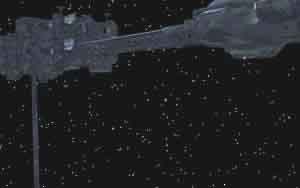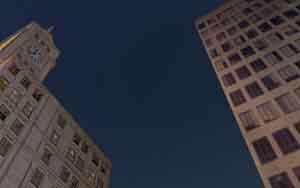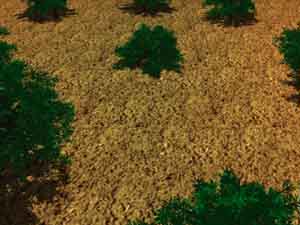Professional 3D Accelerators Roundup (LightWave 7):
May 2002
Testing technique
|
Testing technique for accelerators in LightWave
As the LightWave packet consists of several programs, we divided the testing
procedure into several parts. In the first part (the division is conditional)
I test video cards, and in the other I emulate a real designer's work.
Undoubtedly, only both parts will give a complete idea both on a video
card and on convenience of handling, a rendering speed and quality. I wouldn't
recommend that you make conclusions (except intermediate ones) after the
first part.
Modeling, or emulation of a real designer's work. For this purpose we
have developed a single conception. We have one object which is used three
times, each time with a different number of polygons. The object is sphere;
in the first case it consists of 10,000 polygons, in the second one of
100,000 polygons and in the third one of 500,000. I used 4 projections
of the object which increases the number of displayed polygons 4 times.
So, this is how I tested:
- Prepare the computer for the testing procedure, i.e. install the OS, drivers
and the LightWave packet.
- Start up the LightWave Modeler and load the object.
- Like in the 3D MAX, the object is rotated and moved in all windows in turn
and in each window separately. Estimate quality and speed of operation.
- Select polygons and estimate the speed of selection
- Change positions of windows, their size, switch off images in three windows
out of four and estimate speed and quality.
- Change a screen resolution for higher without leaving the LightWave and
see whether the LightWave still works, then change the resolution back
and check it again.
- When all tests with the objects are completed, repeat the test procedure,
except item 1, with the increased number of polygons.
- Gather all obtained data together and analyze them.
As you can see, the conclusion will be subjective, and you should either
trust me or check the results yourselves. But there is one more part which
contains figures and, thus, is objective. Besides, it uses real scenes
and real loads both on a video system and on the other PC system. The description
of the scenes can be found in the respective part of this article.
- Prepare the computer for the testing procedure, i.e. install the OS, drivers,
the LightWave packet and additional plug-in.
After installation of the plug-in:
- Start up LightWave, choose Plug-ins in Layout menu, then Add plug-ins
- In the dialog box choose the required plug-in.
- The computer will notify that the plug-in is installed successfully.
- Start up LightWave and set the maximum number of polygons to be rendered
when geometry isn't yet turned into bounding boxes. For this choose Display
tab, Display Options. Set the maximum possible Bounding Box Threshold.
- Set 1280 x 1024 at 32-bit color.
- Load the scene. Change the view for the Camera View and Maximum Render
Level for Textured Shaded Solid.
- Start up the plug-in and record the result to estimate the rendering speed
- Change Maximum Render Level for WireFrame
- Start up the plug-in and record the result to estimate the rendering speed
- Change the resolution for 1600 x 1200 at 32-bit color.
- Carry out the tests from item 4 to 7.
- Clear the current scene (File menu, Clear Scene).
- Carry out the tests from item 3 to 10.
- Gather all obtained data together and analyze them.
We thank Aleksei Korolyov who helped us develop the test procedure
(truesoft@rambler.ru)
Test conditions
Intel Pentium 4 based get-up:
- Intel Pentium 4 2200 MHz;
- ASUS P4T-E (i850) mainboard;
- 512 MBytes RDRAM PC800;
- Quantum FB AS 20 GBytes;
- ViewSonic P-810 and ViewSonic P-817-E monitors
The tests were carried out under the Windows XP Professional. The system
was reinstalled for a new accelerator to avoid possible errors, then we
installed the LightWave 7 packet.
There are three base scenes in the tests:
- SPACE

consists of 12 light sources and 4 objects, 231,196 vertices and 251,122
polygons. Rendered screenshot
of the scene.
- TOWN

consists of 2 light sources and 2 objects, 36,488 vertices and 60,544 polygons.
Rendered screenshot
of the scene.
- VALLEY

consists of 1 light source and 9 objects, 727,959 vertices and 462,470
polygons. Rendered screenshot
of the scene.
The rest of the scenes are described in the test parts; all of them were
taken from the LightWave distributive. We thank Aleksei Korolyov for development
of these demo scenes (truesoft@rambler.ru)
[ Part
2 ]
Write a comment below. No registration needed!
|
|
 |
|
|
|



